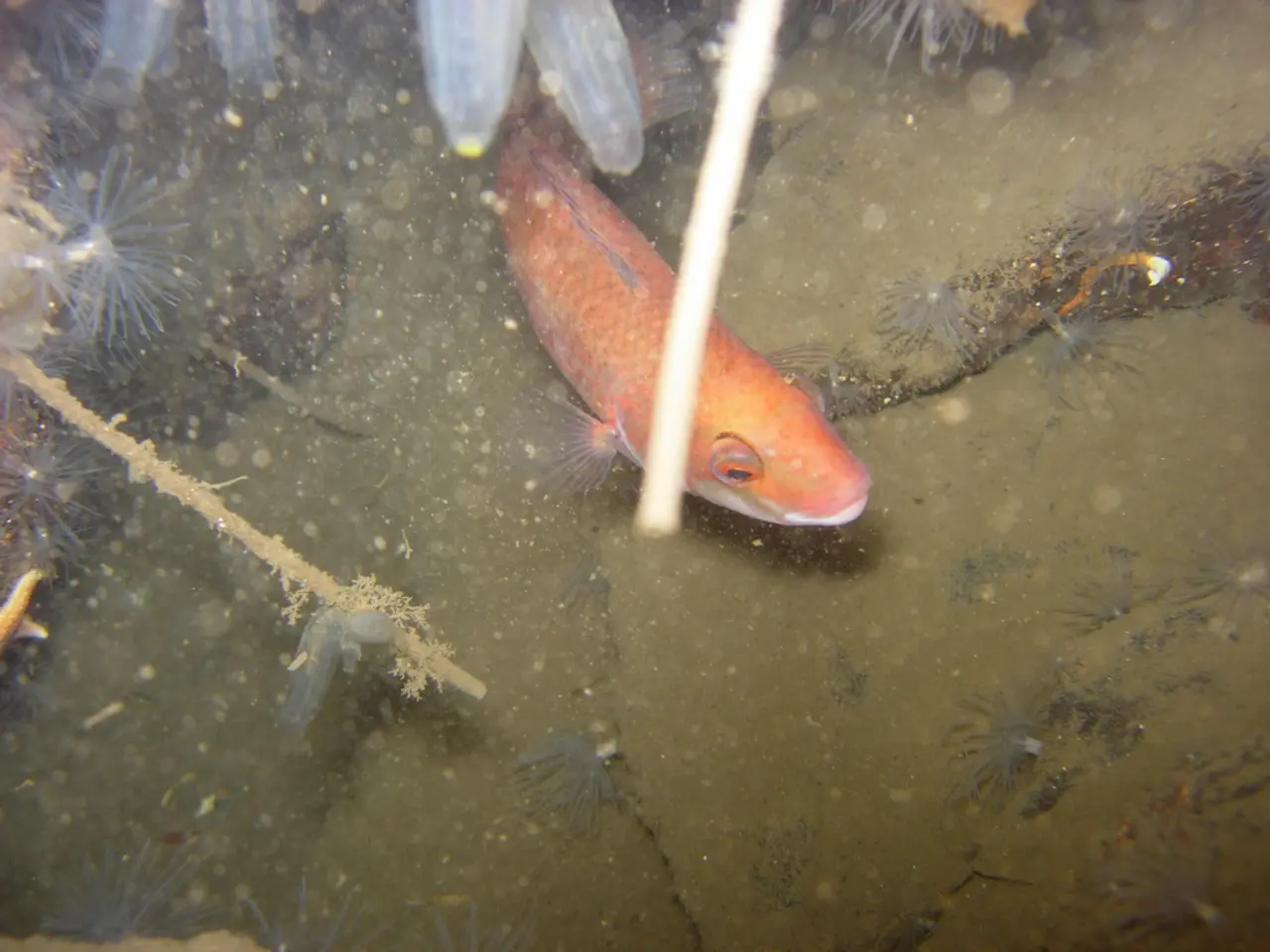Expanding Pond Fish Culture in India: Amplifying Incomes via Intelligent Aquatic Farming
In the eastern regions of India, Pabda, a popular fish native to the country's rivers and lakes, has gained significant attention due to its high market value and year-round demand. This humble fish, declared as the State Fish in Tripura in 2006, is not only a cultural icon but also an excellent choice for small-scale farmers seeking an additional income stream.
However, the success of Pabda farming is often limited by a lack of awareness about scientific feeding practices and pond management. To address this, the National Bureau of Fish Genetic Resources (NBFGR) has identified Pabda as a priority species for aquaculture promotion in India.
Research shows that feeding Pabda fish with diets containing around 30% crude protein (CP) significantly improves weight gain, growth rate, survival, and yield. Feeding 2% to 4% of their total body weight per day optimises growth while minimising waste.
Locally available ingredients like groundnut cake, soybean meal, or fishmeal can be used to prepare nutritious feed formulations suitable for Pabda. Early pond fertilization to promote natural plankton growth supports fingerling nutrition and complements formulated feeds.
It is essential to avoid mixing Pabda with major carp species like *Cirrhinus mrigala*, which compete for food and space, potentially reducing Pabda growth.
Maintaining good pond water quality and regular health monitoring also supports better feed utilisation and fish survival. However, proper feeding practices are crucial for better growth in Pabda fish farming, and protein-rich diets are recommended.
There is scope to develop hatcheries for supplying quality seed and offer schemes that reduce input costs in Pabda farming. Government agencies, Krishi Vigyan Kendras, and fishery departments should conduct awareness drives and offer support in the form of technical training and subsidized inputs.
Overfishing and habitat destruction have led to a decline in the natural availability of Pabda. By breeding Pabda in ponds, many farmers and fishery departments are now working to meet the demand and preserve the species. The price of Pabda remains consistently high, with strong demand both locally and in city markets.
In conclusion, with the right knowledge and resources, Pabda farming can provide a sustainable livelihood for rural families and contribute to India's aquaculture sector. By following the recommended feeding practices and taking advantage of available support, farmers can ensure better profit margins and contribute to the conservation of this important species.
[1] Source: "Optimizing Feed Management for Pabda (Clarias batrachus) Cultivation in India" by K. S. Rao, M. R. S. Prasad, and G. V. R. Prasad. Journal of Aquaculture & Fisheries, 2020.
- To enhance income from Pabda farming and contribute to the aquaculture sector in India, interested individuals can implement scientific feeding practices, using locally available ingredients like groundnut cake, soybean meal, or fishmeal to prepare feed formulations.
- To ensure success in Pabda farming and maximize profits, it's crucial to recognize the importance of proper feeding practices, which involve feeding 2% to 4% of total body weight per day and providing diets with around 30% crude protein to promote weight gain, growth rate, survival, and yield.




